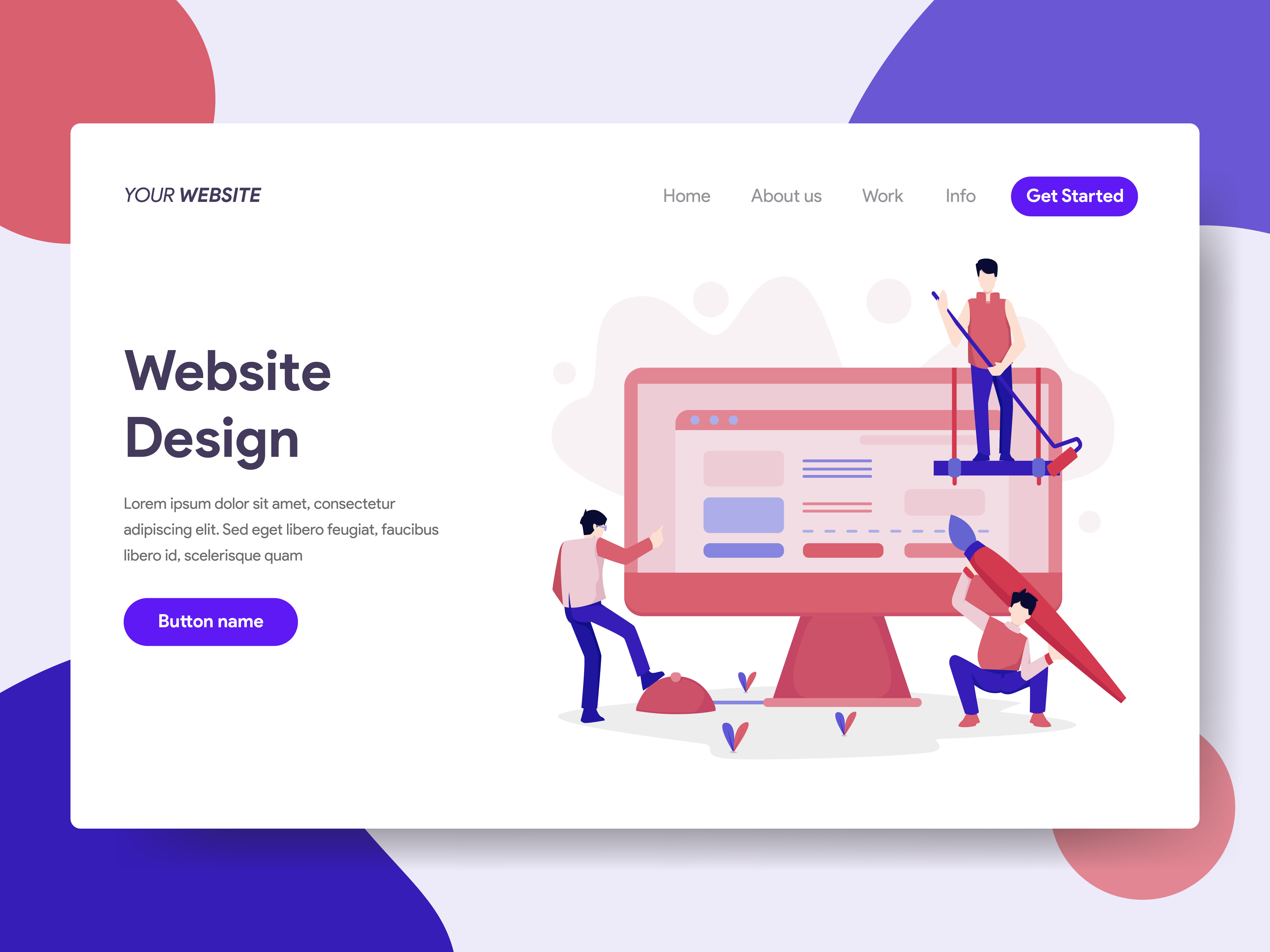Ideas For Making Websites In 2025: Embracing The Future Of Web Design
Ideas for Making Websites in 2025: Embracing the Future of Web Design
Related Articles: Ideas for Making Websites in 2025: Embracing the Future of Web Design
- Cheap Date Ideas Near Me 2025: Budget-Friendly Adventures For Couples
- Closet Organization Ideas For Apartments 2025: Maximize Space And Efficiency
- Cheap Centerpiece Ideas For Weddings In 2025
- The Nightmare Before Christmas Tree: A Timeless Holiday Tradition
- About Us Ideas For Websites In 2025: Crafting A Compelling Narrative
Introduction
With enthusiasm, let’s navigate through the intriguing topic related to Ideas for Making Websites in 2025: Embracing the Future of Web Design. Let’s weave interesting information and offer fresh perspectives to the readers.
Table of Content
Video about Ideas for Making Websites in 2025: Embracing the Future of Web Design
Ideas for Making Websites in 2025: Embracing the Future of Web Design

As we approach the year 2025, the digital landscape is evolving at an unprecedented pace, driven by advancements in technology and the ever-changing needs of users. Websites, as the primary gateways to information and services, must adapt to these evolving trends to remain relevant and engaging.
This article explores innovative ideas and strategies that will shape the future of website design in 2025, providing insights into how businesses and organizations can create websites that are not only visually appealing but also highly functional and user-centric.
1. Immersive and Personalized Experiences
The future of web design lies in creating immersive and personalized experiences that cater to the unique needs and preferences of each user. By leveraging artificial intelligence (AI) and machine learning (ML) algorithms, websites will be able to tailor content, recommendations, and navigation based on individual user behavior and preferences.
This level of personalization will enhance the user experience, making websites more engaging and relevant. Visitors will feel as if the website is designed specifically for them, leading to increased engagement, loyalty, and conversions.
2. Voice-Enabled Interfaces
Voice technology has become increasingly prevalent in recent years, and this trend is expected to continue in the coming years. Websites in 2025 will embrace voice-enabled interfaces, allowing users to interact with websites using natural language commands.
This hands-free approach will make websites more accessible and convenient, especially for users on mobile devices or in situations where typing is impractical. By integrating voice search, voice-activated navigation, and other voice-based features, websites can enhance usability and cater to the growing demand for voice-controlled experiences.
3. Augmented and Virtual Reality Integration
Augmented reality (AR) and virtual reality (VR) technologies are transforming the way we interact with the digital world. In 2025, websites will begin to incorporate AR and VR experiences to provide users with immersive and engaging content.
For example, retail websites may offer virtual try-on experiences, allowing users to see how products look on them without having to physically visit a store. Educational websites may incorporate AR simulations to enhance learning experiences and make complex concepts more accessible. By leveraging AR and VR, websites can create unique and memorable experiences that differentiate them from the competition.
4. Blockchain-Based Security and Transparency
As concerns about data privacy and security continue to grow, websites in 2025 will increasingly adopt blockchain technology to enhance security and transparency. Blockchain’s decentralized and immutable nature makes it ideal for safeguarding user data and ensuring the integrity of website transactions.
By integrating blockchain into their platforms, websites can build trust with users, protect sensitive information from cyber threats, and comply with evolving data protection regulations. This will be particularly important for websites handling financial transactions, personal data, or other sensitive information.
5. Mobile-First Design with Progressive Web Apps
With the majority of internet traffic now coming from mobile devices, mobile-first design will remain paramount in 2025. Websites will be optimized for mobile screens, providing a seamless and responsive experience regardless of the device being used.
Progressive web apps (PWAs) will play a significant role in this mobile-first approach. PWAs are web applications that offer a native-like experience on mobile devices without the need for app store downloads. They provide faster loading times, offline functionality, and push notifications, enhancing user engagement and convenience.
6. Artificial Intelligence-Powered Content Generation
AI-powered content generation is rapidly transforming the way websites produce and deliver content. In 2025, websites will leverage AI algorithms to generate high-quality, relevant, and personalized content that meets the specific needs of their target audience.
AI-powered content generators can create blog posts, articles, product descriptions, social media updates, and other types of content. This automation frees up website owners and content creators to focus on more strategic tasks, such as content planning, audience engagement, and overall website optimization.
7. Chatbots and Virtual Assistants
Chatbots and virtual assistants will become increasingly prevalent on websites in 2025, providing real-time assistance and support to users. These AI-powered tools can answer questions, resolve queries, schedule appointments, and perform a wide range of other tasks.
By integrating chatbots and virtual assistants into their websites, businesses can improve customer service, reduce response times, and provide a more personalized and engaging user experience. This will be particularly valuable for websites with high customer traffic or complex product offerings.
8. Ethical and Sustainable Web Design
As concerns about climate change and environmental sustainability grow, websites in 2025 will embrace ethical and sustainable design practices. This includes using eco-friendly hosting providers, optimizing website performance to reduce energy consumption, and minimizing the use of resource-intensive elements.
By adopting sustainable web design principles, websites can contribute to reducing their environmental impact and align with the values of their target audience. This will become increasingly important as consumers become more environmentally conscious and seek to support businesses that share their values.
9. Data-Driven Design and Optimization
Data-driven design will continue to be essential for websites in 2025. By analyzing website traffic, user behavior, and conversion rates, website owners can gain valuable insights into what works and what doesn’t.
This data can be used to optimize website design, content, and functionality to improve user experience, increase conversions, and achieve specific business goals. A/B testing and other data-driven approaches will be used to continuously refine and improve websites based on real-world data.
10. Inclusive and Accessible Web Design
In 2025, websites will prioritize inclusivity and accessibility to ensure that all users can access and interact with their content. This includes designing websites that are accessible to users with disabilities, such as visual impairments, hearing impairments, and cognitive impairments.
By adopting inclusive design principles, websites can expand their reach, improve user experience, and comply with evolving accessibility regulations. This will be particularly important for websites that provide essential services or information to the public.
Conclusion
The future of website design is bright, with a myriad of innovative ideas and strategies set to transform the way we interact with the digital world. By embracing these trends, businesses and organizations can create websites that are not only visually appealing but also highly functional, user-centric, and future-proof.
As we approach 2025, websites will become more immersive, personalized, voice-enabled, and integrated with AR and VR technologies. They will leverage AI and blockchain to enhance security, transparency, and content generation. Mobile-first design, ethical practices, and data-driven optimization will remain essential principles.
By staying ahead of these trends, website owners can create websites that meet the evolving needs of users, drive business growth, and establish a strong online presence in the years to come. The future of web design is in our hands, and it is up to us to shape it with innovation, creativity, and a commitment to user experience.
![[IMGSRCTITLE2]](https://boltgroup.com/wp-content/uploads/2020/11/BOLTGROUP-Design-2025-hero.jpg)
![[IMGSRCTITLE3]](https://www.rivmedia.co.uk/wp-content/uploads/2021/01/future-of-website-design.jpeg)
![[IMGSRCTITLE4]](https://99designs-blog.imgix.net/blog/wp-content/uploads/2021/01/creative-neo.png?auto=formatu0026q=60u0026fit=maxu0026w=930)
![[IMGTITLE5]](https://www.hostgator.com/blog/wp-content/uploads/2018/06/color-block-web-design.png)
![[IMGTITLE6]](https://149459555.v2.pressablecdn.com/wp-content/uploads/2021/08/Future-Of-Web-Design-featured.png)
![[IMGTITLE7]](http://visuallightbox.com/content/data/upload/2020/03/webdsoft-1.jpg)
![[IMGTITLE8]](https://www.zephyrmedia.com.au/wp-content/uploads/2020/03/Future-of-web-designing.jpeg)
![[IMGTITLE9]](https://blackdoorcreative.com/wp-content/uploads/2021/11/future_of_web_design.jpeg)
Closure
Thus, we hope this article has provided valuable insights into Ideas for Making Websites in 2025: Embracing the Future of Web Design. We appreciate your attention to our article. See you in our next article!

![[IMGSRCTITLE2]](https://cdn.bfldr.com/SH6M70M3/as/hrh9rc7cqmjqpqhxcsh9t/rhyme_without_reason_trio_ideas?width=719u0026height=464u0026fit=cropu0026auto=webp)
![[IMGSRCTITLE3]](https://cdn.bfldr.com/SH6M70M3/as/mzkhqn9b3hs2txh9qjwffft/rhyme_without_reason2?width=398u0026height=256u0026fit=cropu0026auto=webp)
![[IMGSRCTITLE4]](https://i0.wp.com/ideahello.com/wp-content/uploads/2023/05/rhyme-without-reason-ideas.webp)
![[IMGTITLE5]](https://mycollegesavvy.com/wp-content/uploads/2023/10/rhyme-without-reason-4.jpg)
![[IMGTITLE6]](https://i.pinimg.com/originals/80/d4/b4/80d4b4cd185a1e601655d9c8acb63173.png)
![[IMGTITLE7]](https://mycollegesavvy.com/wp-content/uploads/2023/10/rhyme-without-reason-5.jpg)
![[IMGTITLE8]](https://i.pinimg.com/originals/b8/6c/09/b86c09dea9804465d4b70772e81db7b1.jpg)
![[IMGTITLE9]](https://www.comicsandcosplay.com/wp-content/uploads/2023/02/rhyme-without-reason-costume-15-819x1024.webp)

![[IMGSRCTITLE2]](https://insanelygoodrecipes.com/wp-content/uploads/2021/06/High-Protein-Breakfast-Ideas-1.jpg)
![[IMGSRCTITLE3]](https://insanelygoodrecipes.com/wp-content/uploads/2021/06/Avocado-and-Egg-Toast-750x1125.jpg)
![[IMGSRCTITLE4]](https://insanelygoodrecipes.com/wp-content/uploads/2021/06/Avocado-and-Egg-Toast-For-Breakfast.jpg)
![[IMGTITLE5]](https://allnutritious.com/wp-content/uploads/2019/09/20-Filling-High-Protein-Breakfast-Ideas.jpg)
![[IMGTITLE6]](https://www.cushyspa.com/wp-content/uploads/2020/01/20-very-quick-high-protein-breakfast-recipes-you-should-try.jpg)
![[IMGTITLE7]](https://healthbeet.org/wp-content/uploads/2020/12/17-high-protein-breakfast-ideas.jpg)
![[IMGTITLE8]](https://allnutritious.com/wp-content/uploads/2019/09/20-appetizing-high-protein-breakfast-recipes-720x1137.jpg)
![[IMGTITLE9]](https://i.pinimg.com/originals/53/fa/1e/53fa1ea3e4b716e04367834fb8d1bc9f.jpg)

![[IMGSRCTITLE2]](https://www.foxandbriar.com/wp-content/uploads/2019/02/25-Quick-Easy-Ground-Beef-Recipes-SquareCollage.jpg)
![[IMGSRCTITLE3]](https://cdn.loveandmarriageblog.com/wp-content/uploads/2020/04/beef-noodle-casserole-4.jpg)
![[IMGSRCTITLE4]](https://1.bp.blogspot.com/-GlsKKisP3CY/W7uAknNTFBI/AAAAAAAAa7M/XPJf5NQ_BI4-GXSaB0LIcNSB9Pm8JrxzQCLcBGAs/s1600/30minbeeflomein4.jpg)
![[IMGTITLE5]](https://livingwellmom.com/wp-content/uploads/2019/03/easy-ground-beef-and-broccoli-recipe-1-567x850.jpg)
![[IMGTITLE6]](https://www.theseasonedmom.com/wp-content/uploads/2020/03/Ground-Beef-Dinner-with-Summer-Vegetables-3.jpg)
![[IMGTITLE7]](https://neighborfoodblog.com/wp-content/uploads/2019/07/vegetable_and_ground_beef_skillet_2-735x1103.jpg)
![[IMGTITLE8]](https://delishcooking101.com/wp-content/uploads/2020/12/meals-to-cook-with-ground-beef-luxury-10-ways-to-cook-ground-beef-for-meal-prep-of-meals-to-cook-with-ground-beef.jpg)
![[IMGTITLE9]](https://neighborfoodblog.com/wp-content/uploads/2019/07/five-ingredient-bbq-beef-tortilla-pie-1-2-735x1103.jpg)

![[IMGSRCTITLE2]](https://www.eatwell101.com/wp-content/uploads/2016/08/healthy-dinner-recipe-ideas.jpg)
![[IMGSRCTITLE3]](https://www.eatwell101.com/wp-content/uploads/2019/05/chicken-and-green-beans-recipe4.jpg)
![[IMGSRCTITLE4]](https://www.jaroflemons.com/wp-content/uploads/2018/06/Healthy-Chicken-Cobb-Salad-Recipe-Jar-Of-Lemons-3.jpg)
![[IMGTITLE5]](https://www.eatwell101.com/wp-content/uploads/2019/05/chicken-bites-and-asparagus-recipe.jpg)
![[IMGTITLE6]](https://www.eatwell101.com/wp-content/uploads/2016/08/Tomato-Spinach-Shrimp-Pasta-ever.jpg)
![[IMGTITLE7]](https://www.eatwell101.com/wp-content/uploads/2016/08/healthy-dinner-ideas.jpg)
![[IMGTITLE8]](https://www.itisakeeper.com/wp-content/uploads/2019/02/HEALTHY-DINNER-IDEASA-FOR-TWO-HERO.jpg)
![[IMGTITLE9]](https://www.eatwell101.com/wp-content/uploads/2016/08/healthy-recipes-to-make-for-dinner.jpg)

![[IMGSRCTITLE2]](https://www.zoosk.com/date-mix/wp-content/uploads/2022/06/GettyImages-539668147best-date-ideas-nyc-1113x743.jpg)
![[IMGSRCTITLE3]](http://blog.ihg.com/wp-content/uploads/2016/05/date-ideas-new-york-city.png)
![[IMGSRCTITLE4]](https://www.seekingneverland.com/wp-content/uploads/2017/09/romantic-things-to-do-in-nyc.png)
![[IMGTITLE5]](https://thetrulycharming.com/wp-content/uploads/2022/03/best-date-ideas-new-york.jpg)
![[IMGTITLE6]](https://offloadmedia.feverup.com/secretnyc.co/wp-content/uploads/2016/05/16081432/dating.jpg)
![[IMGTITLE7]](https://yourbrooklynguide.com/wp-content/uploads/2020/11/kissing-couple-on-the-Brooklyn-Bridge-862x575.jpg)
![[IMGTITLE8]](https://www.brides.com/thmb/23iiQapPwIhErooxB-LHkI5Jeck=/1200x0/filters:no_upscale():max_bytes(150000):strip_icc()/photo-1515204159654-2625784b406c-98aae864a7ed4034bd2163e4f5b5c0a6.jpeg)
![[IMGTITLE9]](https://i.pinimg.com/originals/eb/aa/ea/ebaaea5d0686114d38ccf20e2380f917.jpg)

![[IMGSRCTITLE2]](https://images.immediate.co.uk/production/volatile/sites/4/2018/08/22-ideas-606ea9b.jpg?quality=90u0026crop=8px,0px,1183px,509pxu0026resize=960,413)
![[IMGSRCTITLE3]](https://mir-s3-cdn-cf.behance.net/project_modules/max_1200/216e6867577637.5b3e550a74536.jpg)
![[IMGSRCTITLE4]](https://d28hgpri8am2if.cloudfront.net/book_images/onix/cvr9781620550878/the-future-of-human-experience-9781620550878_hr.jpg)
![[IMGTITLE5]](https://wiipa.org/wp-content/uploads/2023/03/photo_2023-03-25_23-12-23.jpg)
![[IMGTITLE6]](https://i.pinimg.com/originals/c3/da/59/c3da5934c767ceed551c40e7fce08a61.jpg)
![[IMGTITLE7]](http://www.thefutureorganization.com/wp-content/uploads/2014/11/5_trends.png)
![[IMGTITLE8]](https://nykdaily.com/wp-content/uploads/2021/06/pexels-photo-8386440.jpeg)
![[IMGTITLE9]](https://i.ytimg.com/vi/eA7gjE9rLQg/maxresdefault.jpg)

![[IMGSRCTITLE2]](https://www.prudentpennypincher.com/wp-content/uploads/2016/12/5-ingredient-easy-dinner-recipes.jpg)
![[IMGSRCTITLE3]](https://erhardtseat.com/wp-content/uploads/2019/08/25-Easy-Family-Dinner-Recipes-PIN-and-Main.jpg)
![[IMGSRCTITLE4]](https://www.zootoo.com/wp-content/uploads/2018/02/15-One-Pot-Meal-Recipes.jpg)
![[IMGTITLE5]](https://i.pinimg.com/originals/fb/6f/75/fb6f7513b2a96b7dc1f71cd0c1d98c9d.jpg)
![[IMGTITLE6]](https://insanelygoodrecipes.com/wp-content/uploads/2020/12/Family-Dinner-Ideas-1.png)
![[IMGTITLE7]](https://www.myfussyeater.com/wp-content/uploads/2020/07/Easy-Family-Dinners_002.jpg)
![[IMGTITLE8]](https://i.pinimg.com/originals/1d/d1/37/1dd137b3632b001d0a10e1b03328e00b.jpg)
![[IMGTITLE9]](https://i.pinimg.com/originals/91/48/39/914839385ad654cc4bbc3a76be6b1258.jpg)

![[IMGSRCTITLE2]](https://blog.techo-bloc.com/hs-fs/hubfs/F_V2_2020-US075_DSC1502-4.jpg?width=871u0026name=F_V2_2020-US075_DSC1502-4.jpg)
![[IMGSRCTITLE3]](https://i.pinimg.com/originals/2b/40/4b/2b404b2ca01333f4ad252d17bbd5dbd7.jpg)
![[IMGSRCTITLE4]](https://blog.techo-bloc.com/hs-fs/hubfs/wood_A00412_05_663.jpg?width=3008u0026name=wood_A00412_05_663.jpg)
![[IMGTITLE5]](https://blog.techo-bloc.com/hs-fs/hubfs/2019-CA027-7926-Aug-07-2020-01-15-46-56-PM.jpg?width=2019u0026name=2019-CA027-7926-Aug-07-2020-01-15-46-56-PM.jpg)
![[IMGTITLE6]](https://blog.techo-bloc.com/hs-fs/hubfs/stainless_F_V2_2020-US071_DSC9983-1.jpg?width=2019u0026name=stainless_F_V2_2020-US071_DSC9983-1.jpg)
![[IMGTITLE7]](https://thequick-witted.com/wp-content/uploads/2020/10/outdoor-kitchen-countertop-material-beautiful-outdoor-kitchen-countertop-details-materials-and-ideas-of-outdoor-kitchen-countertop-material.jpg)
![[IMGTITLE8]](https://blog.techo-bloc.com/hs-fs/hubfs/dekton_DSC_9257_Retouched.jpg?width=3538u0026name=dekton_DSC_9257_Retouched.jpg)
![[IMGTITLE9]](https://i.pinimg.com/originals/0f/c5/3f/0fc53f030acc4d19af520f4d11095aa9.jpg)